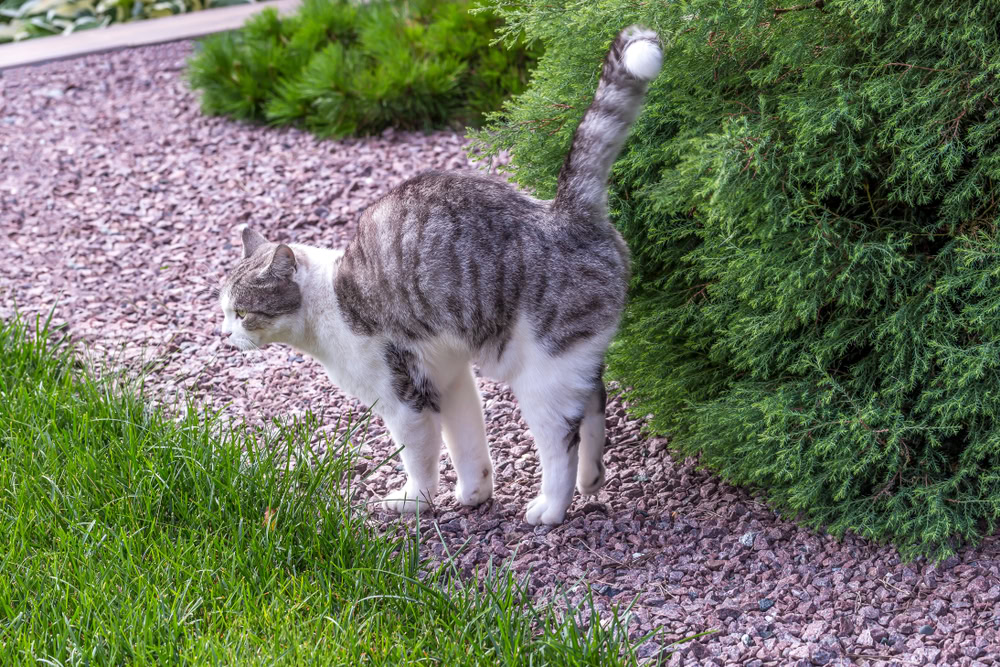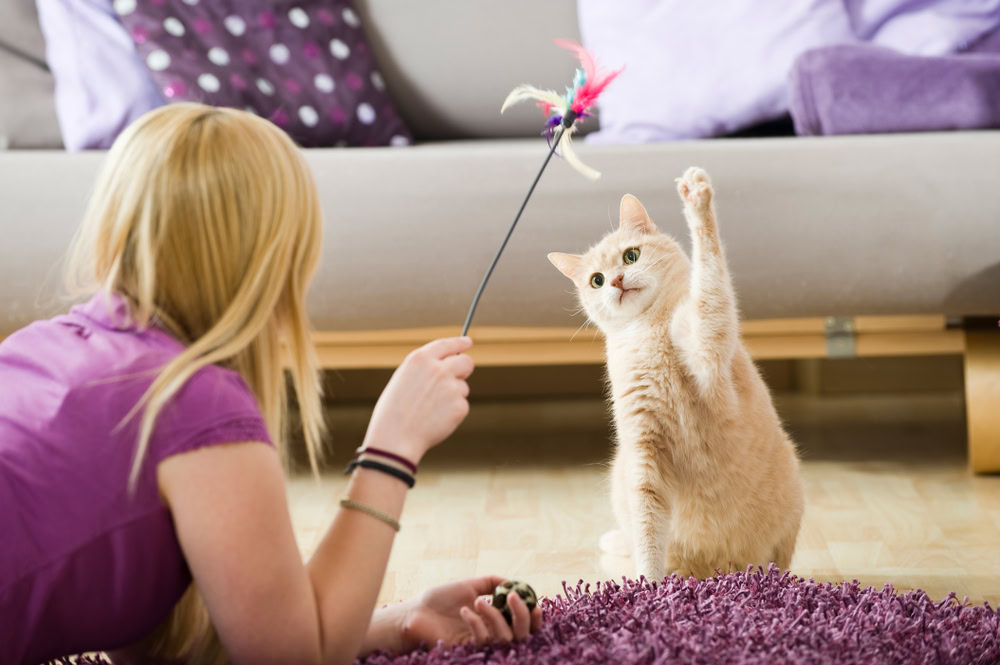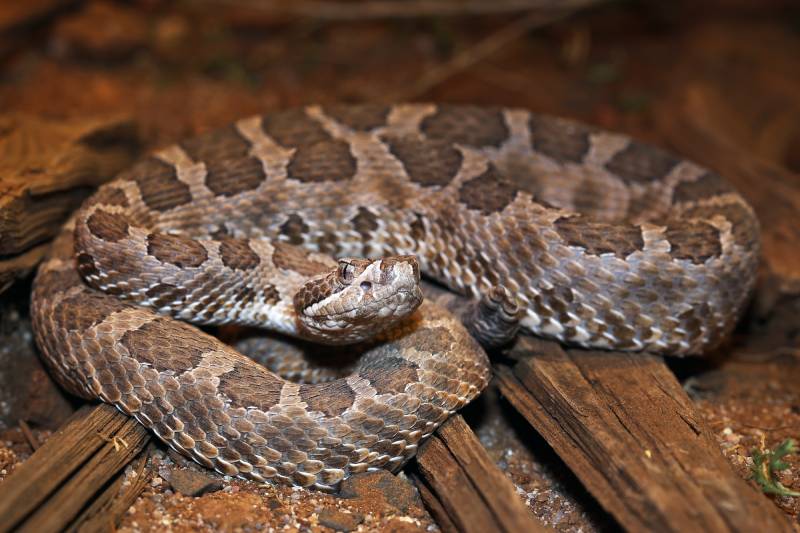VET APPROVED

The information is current and up-to-date in accordance with the latest veterinarian research.
Learn more »Click to Skip Ahead
Many eons ago, a friend of mine worked in a pet shop. Having grown up with dogs, she didn’t have a huge amount of feline handling experience and certainly hadn’t spent a lot of time scrutinizing their anatomy. When a customer asked if there were any male kittens available, she dutifully picked up each tiny cat and checked their abdomens; not a single prepuce to be seen. So she informed the customer that there were currently no males, but perhaps he could check back in a few days.
It was only when she was discussing this with her employer that she learned that male feline genitalia is located at the rear of the cat, not on the abdomen like in dogs. And yes, she was mortified!
My friend is undoubtedly not the only person to have made this mistake, which begs the question: Where Do Cats Pee From?
The Feline Urinary Tract
When it comes to the internal anatomy of the urinary tract, all mammals essentially have the same basic set-up:
Urine is formed as the kidneys filter waste products from the blood, which then travel down tubes called ureters and into the bladder. Once the bladder becomes full, urine is expressed through a tight ring of muscle called a sphincter, into the urethra, where it passes out of the body.
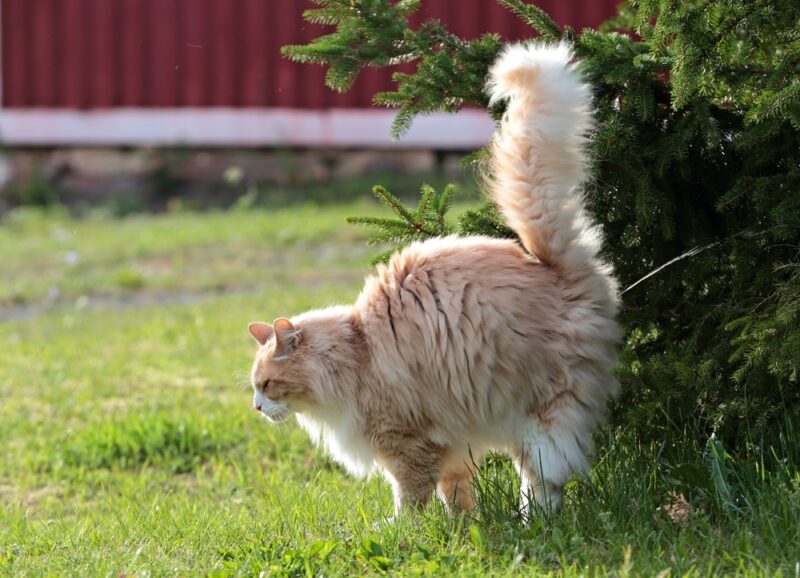
Male vs. Female Cats
To the casual observer, it’s very difficult to differentiate between male and female genitalia, particularly when the male has been castrated. This is because the feline penis spends most of its time safely tucked away in a sheath, only being partially extruded for urination and fully deployed when mating.
Because the penis is located at the back end, there is no need for the male to cock his leg like many male dogs. Both male and female cats usually squat low to urinate.
The urethra of the female cat, like most mammals (apart from humans), exits just above the vagina into a shared opening called a vestibule, which is protected by the vulva.
The posterior location of the feline urethra makes peeing on vertical surfaces easier, which both sexes will do when marking their territory, although males tend to do this more than females.
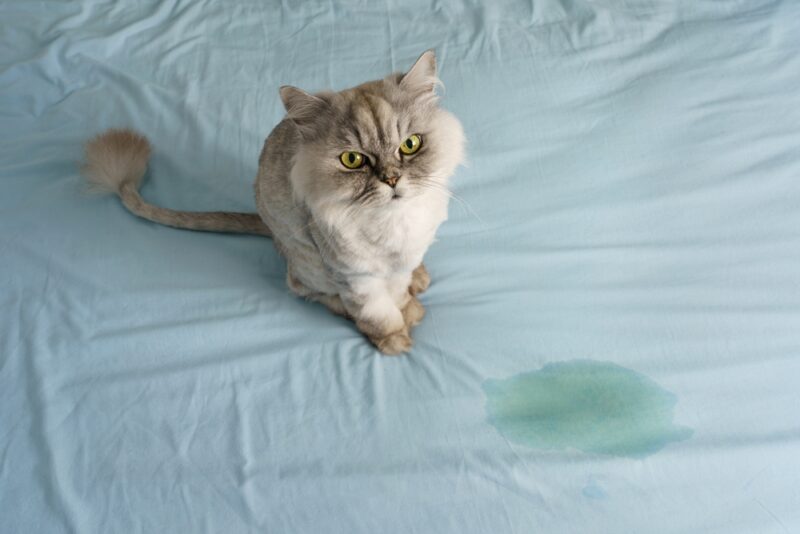
Male Cats vs. Male Dogs
Where my friend’s confusion lay was due to the fact that the canine urethra bends cranially (towards the front) through the penis, which is located on the caudal abdomen and is readily seen with little more than a cursory glance at a dog’s undercarriage.
The urethra of the male cat, on the other hand, is directed caudally (towards the back end), and enters the penis, which sits below the anus and scrotum. So if you’ve grown up around dogs, it’s understandable why you might get confused!
Feline Urine Production and Excretion
There are a number of important structures involved in the production and excretion of urine.
Kidneys
As mentioned above, the kidneys perform the essential role of filtering waste products that build up in the blood as a result of digestive and metabolic processes. They also maintain electrolyte levels and play a role in blood pressure management and hydration. If the kidney (aka renal) filtration system is damaged or impaired, toxins can start to accumulate in the bloodstream, fluid is lost through the urinary system, and incorrect electrolyte levels can result in serious organ dysfunction.
Unfortunately, cats are particularly susceptible to renal disease, most likely due to the high protein levels in their carnivorous diets. Providing your cat with the right balance of nutrients and ensuring they take in plenty of water are the best ways to support their kidney function.
Ureters
Each kidney is joined to the bladder by a narrow tube called a ureter. The ureters transport the urine produced by the kidneys into the bladder. Cats can occasionally accumulate mineralized deposits, or stones, in their kidneys. These often do not cause any major issues, but if they travel into a ureter they can cause an extremely painful and dangerous obstruction of the tube.
Bladder
The feline bladder is roughly the size and shape of a water balloon, with a similar fluid capacity. When the bladder becomes full, stretch receptors in the bladder wall transmit a message to the brain that the cat needs to void urine. The urethral sphincter is kept tightly closed through a combination of conscious/voluntary and unconscious/involuntary control. This prevents urine leakage when an animal is asleep, and allows urine to be released when needed.
Urethra
In female cats, the urethra is quite a short, straight tube that runs from the neck of the bladder into the shared vestibule. In males, there is a slight s-shaped bend in the urethra as it comes around the location of the testes and out through the penis. This bend and longer length makes male cats more susceptible to urethral obstruction (blocked bladder) than females.
Problems With Peeing
Feline lower urinary tract disease (FLUTD) is a relatively common condition (or set of conditions) seen in cats. FLUTD encompasses diseases like cystitis (inflammation of the bladder), infection, crystalluria, bladder stones, and urethral obstruction.
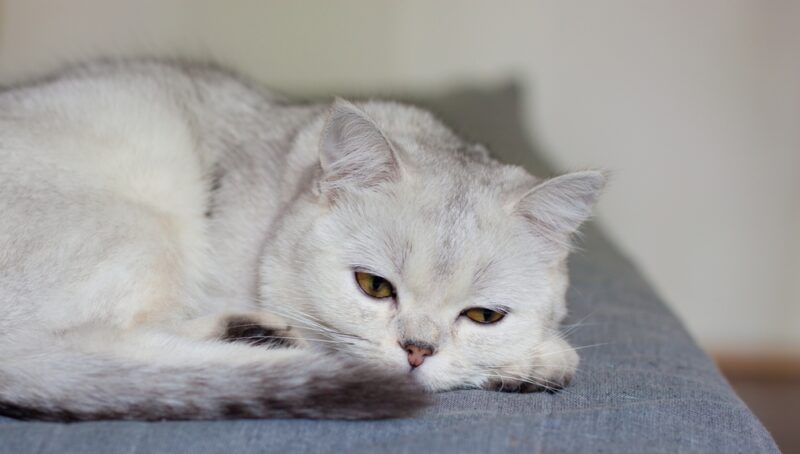
The most common signs of cats suffering from FLUTD include:
- frequent urination or attempts at urination
- vocalizing when urinating/painful urination
- urinating outside the litter box
- blood in the urine
- excessive licking of the genital area
- increased thirst
- decreased appetite
- agitation
- lethargy
- non-productive straining
If your cat is showing any of the above signs, it’s time to get in touch with a vet. This is particularly important for the last point, non-productive straining. If your cat is trying unsuccessfully, to urinate, they may have a urethral obstruction. This is an emergency situation that can progress rapidly, so do not delay in seeking veterinary care for your cat if they are showing these signs.

Final Thoughts
Like all mammals, cats produce urine in their kidneys, which travels to the bladder via the ureters and is voided through the urethra. The female cat’s urethra exits the body via a vestibule which sits behind the vulva.
Unlike male dogs, whose urethra exits through a penis located on the abdomen, the male feline urethra exits through a penis situated in the rear of the body, below the anus and scrotum. The feline penis is rarely seen, though you might catch a glimpse when your cat is treating themselves to a wash.
Because they are susceptible to renal and urinary tract disease, it is important to monitor your cat’s urinary health and toileting habits, ensure they are eating the right balance of nutrients, and always provide access to clean, fresh water.
Featured Image Credit: Helen Liam, Shutterstock
